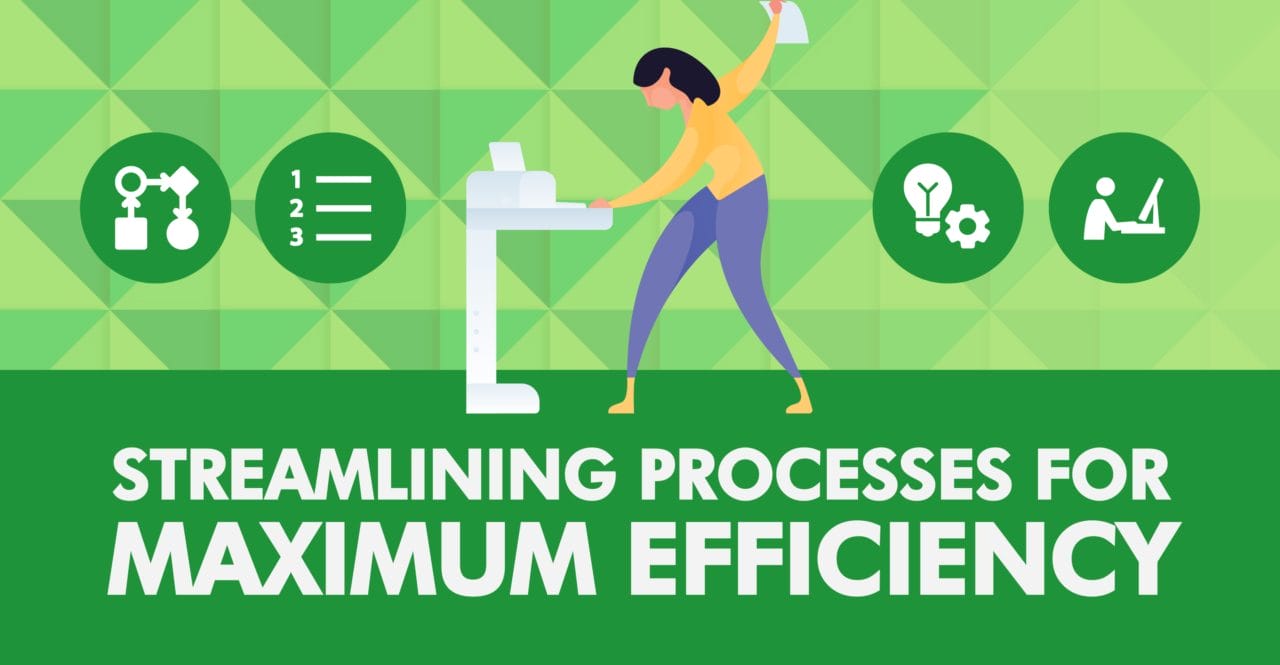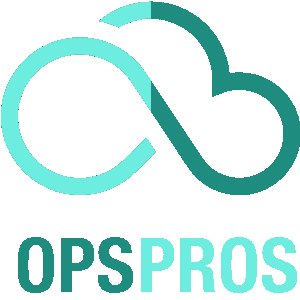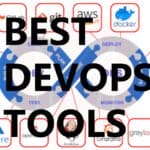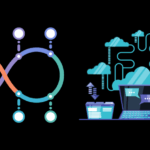DevOps has revolutionized the way software development and operations teams work together. But to truly realize the benefits of DevOps, many organizations are turning to Extreme Programming (XP) practices. XP has been used for decades to improve software development speed, quality, and collaboration.
When combined with DevOps principles, XP can help teams streamline processes, enhance collaboration, and drive software development efficiency. In this article, we’ll explore DevOps XP and how it can benefit your organization.
Key Takeaways:
- DevOps XP combines DevOps principles with Extreme Programming practices to enhance collaboration and efficiency.
- XP practices like continuous integration and test-driven development contribute to the effectiveness of DevOps.
- Implementing XP in a DevOps environment involves integration with DevOps tools and processes and comes with its own set of challenges and benefits.
Understanding DevOps XP
DevOps XP, or Extreme Programming, is a software development methodology that integrates the principles of DevOps with XP practices. Extreme Programming is an agile software development framework that emphasizes continuous feedback, teamwork, and frequent releases.
XP practices involve customer-focused development, continuous integration, automated testing, and pair programming. By combining DevOps principles with XP practices, organizations can streamline their software development processes and improve collaboration between development and operations teams.
Key Principles of Extreme Programming
The key principles of Extreme Programming that can be applied in a DevOps context include:
- Continuous feedback and communication between team members, customers, and stakeholders.
- Continuous integration and frequent releases to ensure a high level of software quality and to reduce the risk of errors.
- Test-driven development, which involves creating automated tests before writing any code.
- Pair programming, which involves two developers working together at one computer.
These principles help to drive collaboration, reduce bottlenecks, and ensure a high level of software quality in a DevOps environment.
Applying Extreme Programming Practices in DevOps
To implement Extreme Programming practices in a DevOps environment, organizations should focus on:
- Creating a culture of collaboration and continuous improvement across development and operations teams.
- Implementing agile processes and tools to support XP practices, such as continuous integration and automated testing.
- Encouraging pair programming and collective code ownership to enhance collaboration and knowledge sharing between team members.
By integrating XP practices with DevOps tools and processes, organizations can improve software quality, speed up delivery times, and achieve greater efficiency in their software development processes.
Implementing Extreme Programming in DevOps

DevOps XP is a powerful approach to software development that combines DevOps principles with Extreme Programming practices. By integrating XP practices into DevOps workflows, organizations can streamline their processes and improve collaboration among teams.
To implement Extreme Programming in DevOps, organizations should follow a few key steps:
- Start with a clear understanding of XP principles and practices. This includes practices like test-driven development, continuous integration, pair programming, and collective ownership.
- Identify areas where XP practices can be applied within DevOps workflows. For example, organizations can use test-driven development to ensure code quality and pair programming to enhance collaboration between developers and operations teams.
- Integrate XP practices with DevOps tools and processes. This might involve configuring CI/CD pipelines to support test-driven development, or using DevOps tools to facilitate pair programming sessions.
- Provide training and support for teams to ensure they understand and can effectively utilize XP practices in a DevOps context.
- Continuously monitor and improve the implementation of XP practices in DevOps workflows, leveraging feedback loops and retrospectives to identify areas for improvement.
Implementing XP in DevOps can present some challenges, including cultural resistance to change, tooling constraints, and difficulty in measuring the impact of XP practices on software development efficiency. However, the benefits of DevOps XP are significant and well worth the effort. By adopting XP practices in a DevOps environment, organizations can increase their speed of delivery, improve software quality, and enhance collaboration and teamwork among development and operations teams.
Stay tuned for the upcoming section on how DevOps XP can streamline software development processes.
Streamlining Processes with DevOps XP

Implementing DevOps XP practices can significantly streamline software development processes, enabling teams to deliver high-quality software at a faster pace than traditional software development methodologies. Extreme Programming (XP) practices such as pair programming, collective code ownership, and continuous integration can help enhance collaboration among team members and increase efficiency, resulting in improved productivity and faster time to market.
In a DevOps environment, XP practices can be seamlessly integrated with DevOps tools and processes to streamline workflows. For instance, continuous integration can be easily integrated into a DevOps pipeline to automate the building, testing, and deployment of code changes. This not only helps reduce errors but also enables teams to quickly identify and address any issues that arise during the development process.
Pair Programming
Pair programming is a key XP practice that involves two developers working together on the same codebase, typically on separate computers. This collaboration approach brings together different perspectives and skill sets, leading to better code quality and faster issue resolution. In a DevOps context, pair programming can help reduce the time needed to develop and test code changes, while also promoting knowledge sharing and mentoring within the team.
Collective Code Ownership
Collective code ownership is another XP practice that encourages team members to take ownership of the codebase as a whole, rather than individual components. This approach promotes cross-functional collaboration and knowledge sharing, enabling teams to work more effectively towards shared goals. In a DevOps context, collective code ownership can help reduce handoffs and delays between development and operations teams, leading to faster time to market and improved software quality.
Overall, DevOps XP can help streamline software development processes by introducing effective collaboration practices that improve efficiency and productivity. By leveraging XP practices such as pair programming and collective code ownership, teams can work together more effectively, leading to faster delivery of high-quality software.
Improving Collaboration through DevOps XP

The success of DevOps is largely dependent on effective collaboration between development and operations teams. This is where DevOps XP (Extreme Programming) practices can play a crucial role in improving teamwork and alignment.
DevOps XP emphasizes a culture of shared ownership and collective responsibility. It encourages team members to work closely together and share knowledge and skills. This collaboration extends beyond the development and operations teams to include stakeholders across the organization.
XP practices like continuous communication and regular retrospectives can help to foster this collaborative culture. These practices facilitate open and honest communication between team members, and allow for continuous feedback and improvement.
Another key XP practice that can improve collaboration is pair programming. This involves two developers working together on the same code at the same time. This practice not only improves the quality of the code, but also helps to break down silos and improve collaboration between team members.
Collective code ownership is another XP practice that can enhance collaboration. This practice allows any team member to make changes to any part of the codebase, as long as they follow established guidelines and best practices. This helps to break down the traditional hierarchy of ownership and encourages all team members to take ownership of the code.
Benefits of DevOps XP

Embracing DevOps XP can provide organizations with a multitude of benefits. By combining DevOps principles with Extreme Programming practices, teams can achieve higher levels of collaboration, productivity, and software quality. Here are some advantages of implementing DevOps XP:
- Streamlined Processes: XP practices like pair programming and collective code ownership can enhance collaboration and reduce bottlenecks in the development cycle. This results in faster and more efficient delivery of software.
- Improved Quality: Continuous integration and test-driven development practices can help catch defects earlier in the development process, reducing the likelihood of bugs in production.
- Increased Productivity: By automating repetitive tasks and fostering collaboration, DevOps XP can help teams work more efficiently and effectively, resulting in increased productivity.
- Enhanced Communication: DevOps XP encourages regular communication and collaboration between development and operations teams, leading to better alignment and fewer misunderstandings.
- Stronger Culture: Adopting XP practices can help establish a culture of continuous learning and improvement, promoting innovation and creativity within teams.
By implementing DevOps XP, organizations can gain a competitive advantage in the software development industry and deliver higher quality software at a faster pace.
Overcoming Challenges in DevOps XP Adoption

While DevOps XP can offer numerous benefits to organizations, its implementation is not without challenges. Here are some strategies to overcome potential obstacles:
Lack of Proper Training
One of the biggest challenges in DevOps XP adoption is the lack of proper training for team members. Organizations should invest in training programs to ensure that developers and operations staff understand XP principles and practices, and how they can be applied in a DevOps environment. Ongoing training and mentorship can help reinforce this knowledge and promote adoption.
Cross-functional Collaboration
Another challenge in DevOps XP adoption is promoting cross-functional collaboration between development and operations teams. Organizations should encourage regular communication and collaboration between these groups, such as joint planning sessions, cross-team retrospectives, and a shared focus on overall business goals. This can help foster a culture of collaboration and teamwork.
Supportive Organizational Culture
Finally, a supportive organizational culture is critical for successful DevOps XP adoption. This means creating an environment that values experimentation, innovation, and continuous improvement. Leaders should encourage risk-taking and provide opportunities for teams to experiment with XP practices and tools. Celebrating successes and learning from failures can further reinforce this culture of experimentation.
By addressing these challenges with targeted strategies, organizations can successfully adopt DevOps XP and reap the benefits of improved collaboration, streamlining of processes, and increased development efficiency.
DevOps XP Best Practices
The following are some best practices for implementing DevOps XP effectively:
- Continuous integration: Adopt continuous integration practices to ensure code changes are regularly merged into the main branch. Use tools like Jenkins or Travis CI to automate the process.
- Test automation: Implement automated testing to detect issues early and reduce manual testing time. Use tools like Selenium or Appium for web and mobile app testing respectively.
- Code reviews: Encourage regular code reviews to share knowledge, identify issues, and ensure code quality. Consider tools like GitHub or GitLab for facilitating code review processes.
- Continuous learning: Promote a culture of continuous learning and improvement by providing opportunities for training and knowledge sharing. Consider setting up a knowledge-sharing platform or lunch and learn sessions to enable continuous learning.
By implementing these practices, organizations can leverage the benefits of DevOps XP and drive software development efficiency.
Continuous Improvement in DevOps XP

Continuous improvement is a critical aspect of DevOps XP. It involves using feedback loops, metrics, and retrospectives to identify areas for improvement and drive continuous learning and innovation. By continually improving processes and practices, organizations can achieve greater efficiency, enhance collaboration, and deliver higher-quality software products.
Feedback Loops
Feedback loops play an essential role in continuous improvement in DevOps XP. Feedback is essential for identifying issues and areas for improvement, as well as for validating the effectiveness of implemented changes. In a DevOps environment, feedback loops can include automated testing, monitoring, and user feedback.
Metrics
Metrics are another essential component of continuous improvement in DevOps XP. By tracking and analyzing metrics such as cycle time, lead time, and defect rates, organizations can gain insights into their processes’ effectiveness and identify potential areas for improvement.
| Metric | Description |
|---|---|
| Cycle Time | The time it takes to complete one cycle of a process, from ideation to delivery. |
| Lead Time | The time it takes to deliver the finished product to the customer. |
| Defect Rate | The number of defects found in a product or process, expressed as a percentage of total output. |
Retrospectives
Retrospectives are regular meetings where team members reflect on their work and identify areas for improvement. In a DevOps XP environment, retrospectives are key to driving continuous improvement. By encouraging team members to share their successes and challenges, retrospectives can help promote a culture of collaboration and learning.
Overall, continuous improvement is a fundamental aspect of DevOps XP. By using feedback loops, metrics, and retrospectives, organizations can identify areas for improvement and drive continuous learning and innovation, enhancing their software development processes’ efficiency and effectiveness.
Conclusion
In conclusion, DevOps XP is an effective approach to software development that combines DevOps principles with Extreme Programming practices. By embracing XP in a DevOps environment, organizations can streamline processes, improve collaboration, and drive software development efficiency.
Implementing Extreme Programming in DevOps involves understanding the key principles and practices of XP and integrating them with DevOps tools and processes. While there may be challenges in adopting DevOps XP, such as proper training and cross-functional collaboration, a supportive organizational culture can help overcome these obstacles.
By following best practices for DevOps XP, such as continuous integration, test automation, and code reviews, organizations can enhance software quality, speed of delivery, and overall team productivity. Continuous improvement is also essential in a DevOps XP environment, using feedback loops and retrospectives to drive innovation and learning.
We encourage readers to consider implementing Extreme Programming practices in their DevOps workflows to take advantage of the benefits of DevOps XP. By doing so, they can foster collaboration, streamline processes, and drive software development efficiency.
FAQ

Q: What is DevOps XP?
A: DevOps XP, or Extreme Programming, is a set of software development practices that focuses on efficiency and collaboration. It combines DevOps principles with Extreme Programming techniques to streamline processes and drive software development efficiency.
Q: How does DevOps XP relate to Extreme Programming?
A: DevOps XP incorporates the key principles and practices of Extreme Programming into a DevOps environment. It utilizes practices such as continuous integration, test-driven development, pair programming, and collective code ownership to enhance collaboration and efficiency.
Q: What are the benefits of implementing Extreme Programming in a DevOps environment?
A: Implementing Extreme Programming in a DevOps environment can lead to streamlined processes, improved collaboration, and increased efficiency. It helps teams deliver higher quality software at a faster pace by focusing on continuous integration, automated testing, and regular communication.
Q: How can Extreme Programming be implemented in a DevOps environment?
A: Implementing Extreme Programming in a DevOps environment involves integrating XP practices into existing DevOps tools and processes. This can include setting up continuous integration pipelines, practicing test-driven development, and promoting a culture of collaboration and shared ownership.
Q: How does DevOps XP streamline software development processes?
A: DevOps XP streamlines software development processes by promoting practices such as pair programming and collective code ownership. These practices enhance collaboration and allow teams to work more efficiently together, resulting in faster and more streamlined software development.
Q: How does DevOps XP improve collaboration among development and operations teams?
A: DevOps XP improves collaboration by emphasizing continuous communication and regular retrospectives. It encourages teams to work together closely and align their efforts, fostering a culture of collaboration and shared responsibility.
Q: What are the benefits of embracing DevOps XP?
A: Embracing DevOps XP can lead to benefits such as improved software quality, faster delivery times, and increased team productivity. By combining DevOps principles with Extreme Programming practices, organizations can achieve greater efficiency and collaboration in their software development processes.
Q: What challenges might organizations face when adopting DevOps XP?
A: Some challenges organizations may face when adopting DevOps XP include resistance to change, lack of cross-functional collaboration, and difficulties in integrating XP practices with existing tools and processes. However, with proper training, support, and a focus on continuous improvement, these challenges can be overcome.
Q: What are some best practices for implementing DevOps XP?
A: Best practices for implementing DevOps XP include continuous integration, test automation, code reviews, and continuous learning. These practices help to ensure that software development processes are streamlined, efficient, and collaborative.
Q: How can organizations foster continuous improvement in DevOps XP?
A: Organizations can foster continuous improvement in DevOps XP by establishing feedback loops, using metrics to measure progress, and conducting regular retrospectives. By identifying areas for improvement and implementing changes, organizations can drive continuous learning and innovation.
External References
What is Extreme Programming? – https://www.agilealliance.org/glossary/xp/







